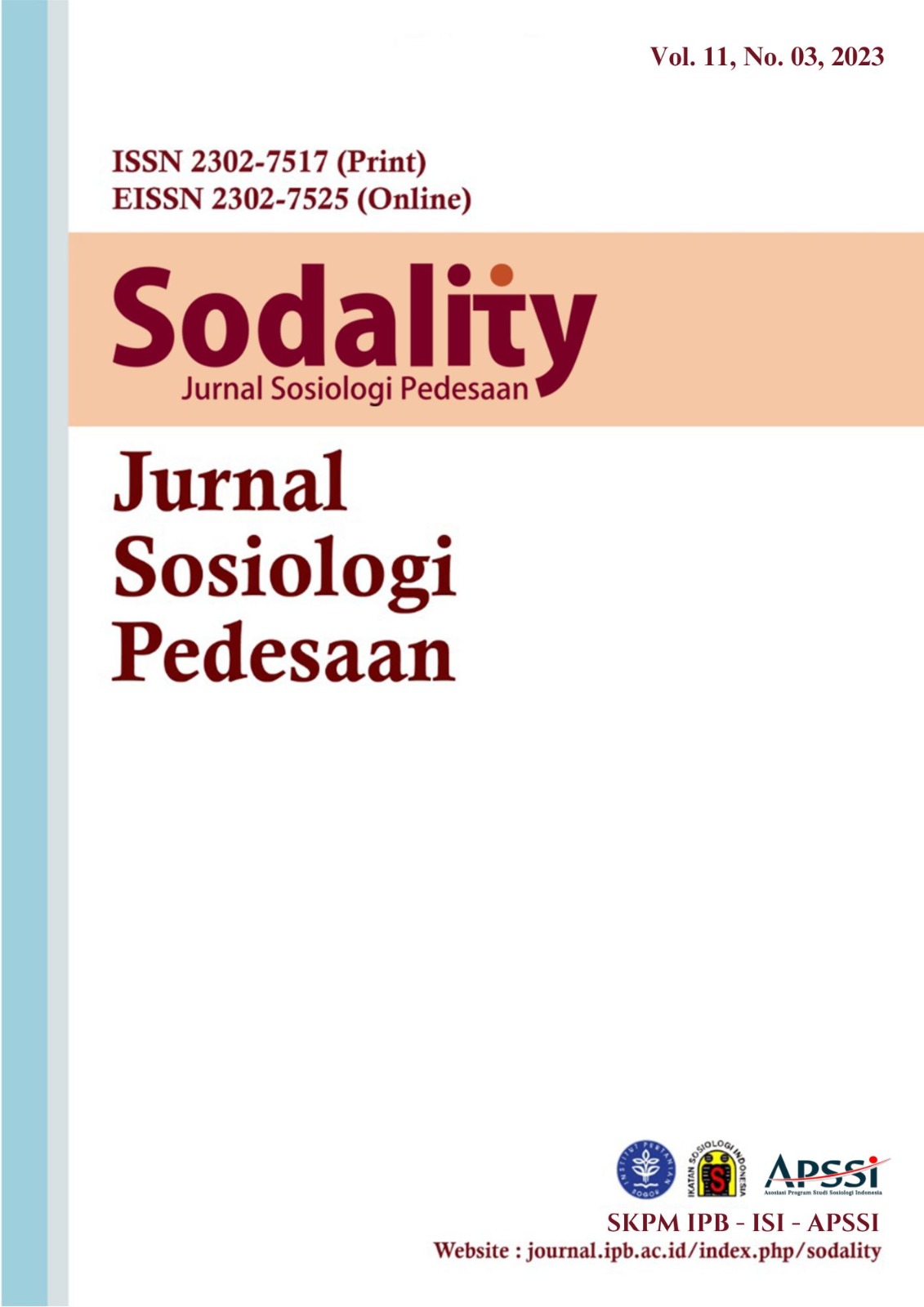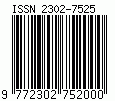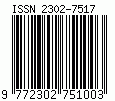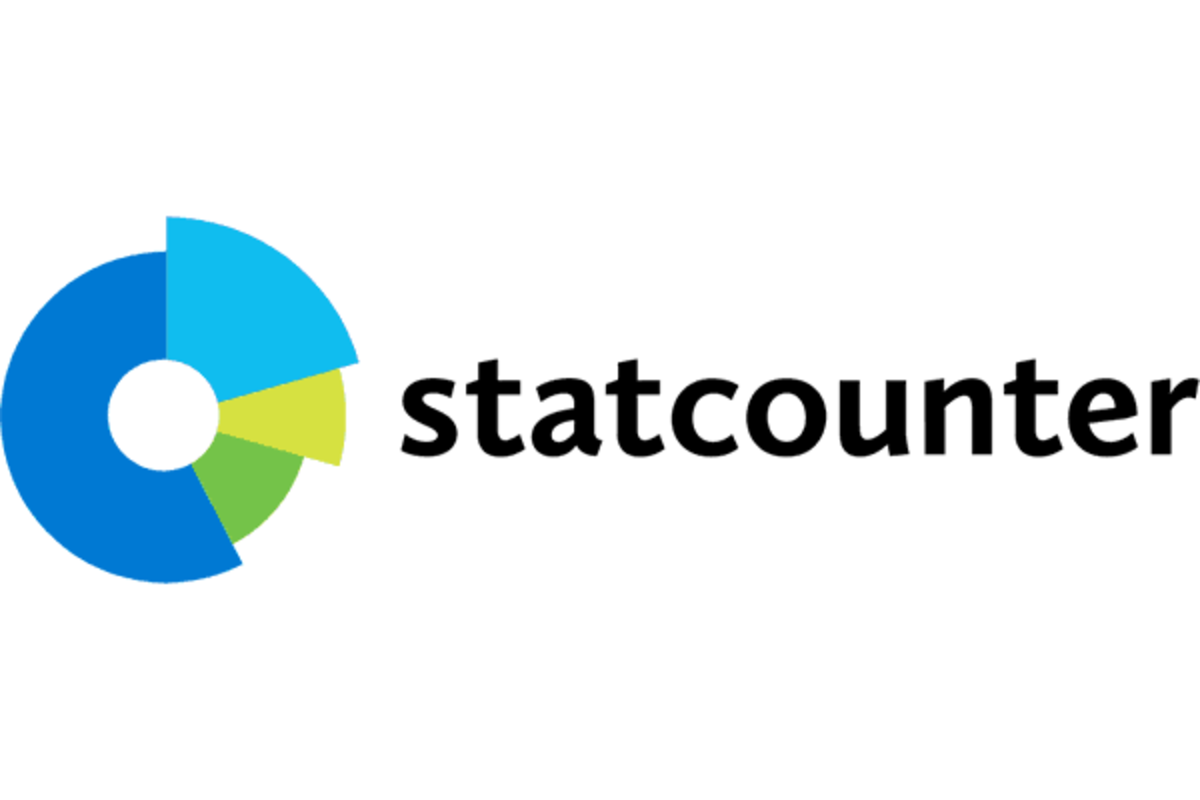Community Attitudes towards Mangrove Management in Teluk Sulaiman Village, Berau Regency, Indonesia
Abstract
This research aims to determine the value of community attitudes in Teluk Sulaiman in mangrove management and the factors that influence attitudes. This is a descriptive research using questionnaire and observation as data collection methods. Attitude measurement uses cognitive, affective, and conative aspects. To assess attitudes a Likert scale with SPSS processing is used. The results of the study obtained that the attitudes of the people in this village were positive with a value of 4.15, where the cognitive aspect value was 4.13, affective aspect 4.35 and conative aspect 3.96. The factor that influences attitude values is income. Meanwhile, other factors, such as age, and number of family members do not have a significant effect. Length of stay factor has a sufficient relationship with attitude value. The attitude scores seen from the gender segment do not have a significant difference, although in general the attitude scores of men are higher than women. The attitude scores of immigrants and native residents do not have a significant difference, although in general the attitude scores of immigrants are higher than those of native residents.
References
Anonymous. (2015). Village Middle Development Plan Teluk Sulaiman. Teluk Sulaiman Village Government.
Anonymous. (2016). TFCA Kalimantan Program Final Report.
Anonymous. (2021). FORLIKA Quarterly Activity Report.
Arifanti, V. B., Novita, N., Subarno, & Tosiani, A. (2021). Mangrove deforestation and CO2 emissions in Indonesia. IOP Conference Series: Earth and Environmental Science, 874(1). https://doi.org/10.1088/1755-1315/874/1/012006
Azwar, S. (1995). Sikap Manusia. Teori dan Pengukurannya. Pustaka Pelajar.
Cameron, C., Hutley, L. B., Friess, D. A., & Brown, B. (2019). High greenhouse gas emissions mitigation benefits from mangrove rehabilitation in Sulawesi, Indonesia. Ecosystem Services, 40. https://doi.org/10.1016/j.ecoser.2019.101035
Depari, C. (2023). Assessing community participation in a rural collaborative placemaking: Case of Trucuk sub-village, Bantul Regency, Indonesia. Sodality: Jurnal Sosiologi Pedesaan, 11(2), 111–129. https://doi.org/10.22500/11202346563
Dey, T., Kamruzzaman, M., Islam, M. A., Bachar, B. K., & Pitol, M. N. S. (2020). Attitudes of local people towards community based eco-tourism in the Sundarbans. International Journal of Business Management and Social Research, 9(2), 528–535. https://doi.org/10.18801/ijbmsr.090220.55
Dimitrakopoulus, P., Jones, Iosifides, Florokapi, Lasda, Paliouras, & Evangelinos. (2010). Local attitudes on protected area: Evidence from three Nature 2000 wetland sites in Greece. Environmental Management, 91(9), 1847–1854. https://doi.org/10.1016/j.jenvman.2010.04.010
Forlika. (2020). Profile of Teluk Sulaiman Village. Teluk Sulaiman Village Government.
Gumilar, I. (2012). Partisipasi masyarakat pesisir dalam pengelolaan ekosistem hutan mangrove berkelanjutan di Kabupaten Indramayu. Jurnal Akuatika Indonesia, 3(2), 244417.
Gunawan, Suhardiyono, Marwan, Rahmat, A., Tribudi, Fajri, M., & Hamzah. (2022). Assessment Learning PERANTI and PSABM.
Hamzah, Yuliantri, Budiayu, A., Saryadi, Basir, Hidayat, & Priandoko. (2017). Laporan Workshop Membangun Skema Pengelolaan Mangrove Berbasis Masyarakat di Kabupaten Berau.
Ilman, M., Dargusch, P., Dart, P., & D, O. (2016). Analisis historis mengenai penyebab hilangnya dan degradasi hutan bakau di Indonesia. Land Use Policy, 54, 448–459. https://doi.org/https://doi.org/10.1016/j.landusepol.2016.03.010
Buncag, M. J. J. (2021). Community-based mangrove forest management sustainability: The case of some Asian countries. International Journal of Science and Research, 10(4), 918–926. https://doi.org/10.21275/SR21420102808
Kusmana, C., & Sukwika, T. (2018). Coastal community preference on the utilization of mangrove ecosystem and channelbar in Indramayu, Indonesia. AACL Bioflux, 11(3), 905–918.
Leasa, M., Talakua, M., & Batlolona, J. R. (2016). The development of a thematic module based on Numbered Heads Together (NHT) cooperative learning model for elementary students in Ambon, Moluccas-Indonesia. The New Educational Review, 46(4), 174–185. https://doi.org/10.15804/tner.2016.46.4.15
Nurdin, N., Akbar, M., Patittingi, F. (2015). Dynamic of mangrove cover change with anthropogenic factors on small island, Spermonde Archipelago, Proc. SPIE 9638, Remote Sensing of the Ocean, Sea Ice, Coastal Waters, and Large Water Regions 2015 (14 October 2015); https://doi.org/https://doi.org/10.1117/12.2194645
Nurrani, L., Bismark, M., & Tabba, S. (2015). Partisipasi lembaga dan masyarakat dalam konservasi mangrove: Studi kasus di Desa Tiwoho Provinsi Sulawesi Utara. Jurnal Wasian, 2(1), 21–32.
On-prom S. (2014). Community-based mangrove forest management in Thailand: Key lesson learned for environmental management risk. In Nobuhiro Kaneko et al. (eds). Sustainable Living with Environmental Risks. Springer.
Raj, R., Devaraj, M., Bose, S., Ramalingam, S., & Cas, B. (2020). Improving women’s access to climate information services and enhancing their capability to manage climate risks. APN Science Bulletin, 10(1), 3–10. https://doi.org/10.30852/sb.2020.946
Rizal, A., Sahidin, A., Herawati, H. (2018). Economic value estimation of mangrove ecosystems in Indonesia. Biodiversity International Journal, 2(1), 98–100. https://doi.org/10.15406/bij.2018.02.00051
Sardjono, M. A. (2004). Mosaik Sosiologis Kehutanan: Masyarakat Lokal, Politik dan Kelestarian Sumberdaya. Debut Press.
Máñez, K. S., Krause, G., Ring, I., & Glaser, M. (2014). The Gordian knot of mangrove conservation: Disentangling the role of scale, services and benefits. Global Environmental Change, 28(1), 120–128. https://doi.org/10.1016/j.gloenvcha.2014.06.008
Setiawan, H. (2016). Tingkat partisipasi masyarakat pada kegiatan rehabilitasi mangrove dalam rangka mitigasi perubahan iklim. Prosiding Seminar Nasional Geografi UMS, 2016, 250–259.
Talakua, E. G. (2016). Sikap dan Perilaku Masyarakat dalam Pengelolaan Ekosistem Mangrove di Kecamatan Teluk Ambon. 12(1), 1–9.
Wahyulianto, I. (Ed.). (2021). Renstra PKHB (1st ed.). Penerbit Ziqron.
Ward, C., Stringer, L. C., Warren-Thomas, E., Agus, F., Hamer, K., Pettorelli, N., Hariyadi, B., Hodgson, J., Kartika, W. D., Lucey, J., McClean, C., Nurida, N. L., Saad, A., & Hill, J. K. (2020). Wading through the swamp: what does tropical peatland restoration mean to national-level stakeholders in Indonesia? Restoration Ecology, 28(4), 817–827. https://doi.org/10.1111/rec.13133
Yusuf, S. M., Murtilaksono, K., Hidayat, Y., & Suharnoto, Y. (2018). Spatial pattern of soil erosion in cikapundung watershed, Indonesia. International Journal of Scientific and Technology Research, 7(2), 32–39.
Authors who publish with this journal agree to the following terms:
- Authors retain copyright and grant the journal right of first publication with the work simultaneously licensed under a

This work is licensed under a Creative Commons Attribution 4.0 International License. that allows others to share the work with an acknowledgement of the work's authorship and initial publication in this journal. - Authors are able to enter into separate, additional contractual arrangements for the non-exclusive distribution of the journal's published version of the work (e.g., post it to an institutional repository or publish it in a book), with an acknowledgement of its initial publication in this journal.
- Authors are permitted and encouraged to post their work online (e.g., in institutional repositories or on their website) prior to and during the submission process, as it can lead to productive exchanges, as well as earlier and greater citation of published work (See The Effect of Open Access).





.png)










